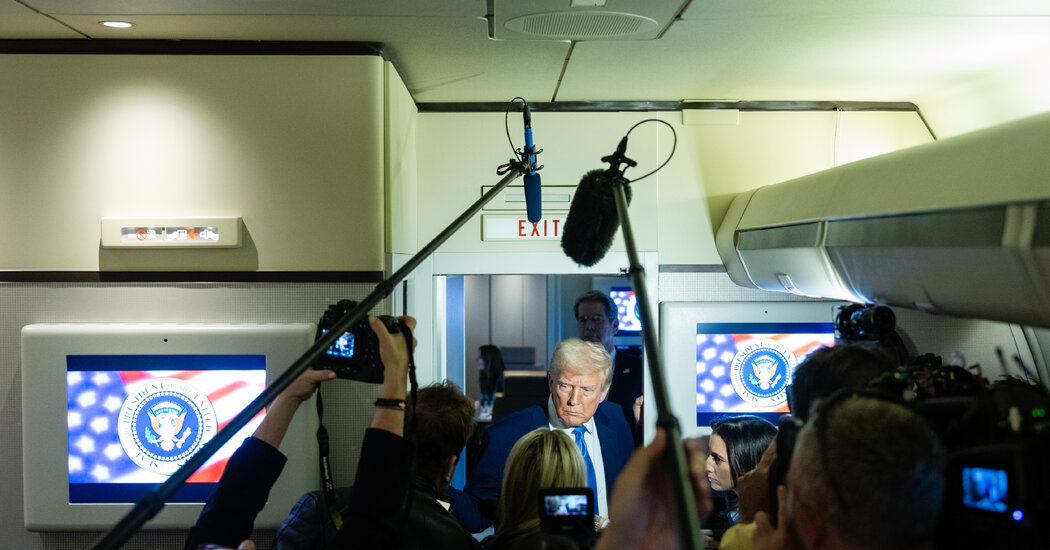We are living in a world, where for every work we need a mobile app. Due to so much dependency on mobile apps, we can’t deny the fact that mobile apps incur, great scope for businesses to gain profit.
The mobile app market is full of opportunities for every business. How? Here is the answer.
In the past, mobile advertising spending is very high, at $327B, and is expected to grow to $399B by 2024, which drives large profits to businesses.
According to stats, the non-gaming and gaming categories have successfully earned $10.4B in FY22 by introducing new ideas and services in the app.
| Top non-game mobile apps |
Tinder, Netflix, Youtube, Pandora, and Google One |
| Top mobile game apps |
Pubg, Pokemon Go, and Fun Race 3D |
This promises many opportunities for mobile app owners for their businesses. You need to start with an app that is feasible for your business.
And for the instance, if you have questions like;
-> How much money do apps make per download?
-> How do free apps make money without ads?
-> How to make money creating apps for android?
-> How to earn money by creating apps?
-> Do free apps make money?
Yes, to answer this we have accumulated a guide that will answer your every question.
But first, be careful about app monetization models before you start with the app development process. It’s not like every app has the capacity within itself to earn money, absolutely NO. The only way to make a profit is to research well and pre-planned to search out all the possible factors by which you can generate revenue for your mobile app.
In the market, there are plenty of monetization methods present. Surely they are going to confuse you. But don’t worry. Today, we discuss the best monetization models that could transform your business and reach maximum revenue.
So without a delay, let’s start!
Let’s check out: 110 Best Money-Making Startup Business Ideas In 2023
Monetization Models to Make Money through Mobile Apps
How to make money by creating apps?
It is a big question to answer.
Before you want to start your journey. You need to have an ideal app that works well for your users.
The only key you can go with is to develop an app that solves users’ problems, triggers their interest, provides the best experience on app UI, and makes them your valid audiences.
But keep in mind your app development cost, don’t go too expensive, and avoid using errands of features.
Now we proceed further and discuss app monetization methods. They are the best thing that gives you a clear glance at your user and earns money. The next thing is how to earn money by creating apps.
The app revenue can be fueled in a number of ways. Like subscriptions, free downloads, product sales, services, and more. If your app idea is unique and can give beyond-the-ground services, then congrats you’re in the right direction.
There are many ways to grab the user’s intention, your movement decides whether you have made the right or wrong decision.
There are several monetization models for mobile apps, but it’s not needed to look at. We have curated a list of top revenue models that ensure your business revenue uplift in less time.
What are the best app monetization models/methods?
Let’s talk about the most valuable methods that can monetize your business value in the market and lead you ahead in the competition.
As per the survey, 90% of the mobile apps available on play Store are free. Yes, we are not kidding, it’s true.
How do free apps make money without ads? Do free apps make money?
The revenue business model is freemium upsell, which is basically free for every registered user on a mobile app. Such apps are designed in a way that helps businesses to attract the majority of users. They are the best way to earn money via apps.
NOTE: If the user found some other platform where similar things get for free, then they may move on to that platform.
People expect to save money and get discounts from the freemium upsell apps. It is a great tactic to engage users with plenty of options like display ads, banner ads, video ads, sponsorship, and other pop-ups, and give a snap view of the platform UI experience.
Whatsapp Business Model is the best example based on freemium upsell.
The freemium mobile version is free and developed for lighter usage. But if users want to access additional services and a better UI, they can purchase it too. First-time users come for free services while when they feel friendly and more mature with your platform they go for paid ones.
The Freemium model is designed to target potential audiences. Hence, free features are wisely placed into the app for more user engagement, while pushing them for purchase is the key.
However, paid apps are better to bring loyal customers to your platform. The services which you are selling for the amount charged, deliver them quality service. And allow them to buy additional things from your app.
Here are some paid app services, for your interest.
Subscription models are best to drive focused and intended users on mobile apps. These are not free but have a large pool of content and services to access. The registered user needs to pay a small fee to “subscribe” to these services.
For the subscribed users, the app needs to take extra care. Combating all, the mobile app developer makes sure that users can’t feel left out of the platform.
Now, let’s talk about different classifications of subscription models. The subscription model is categorized into two ways;
Let’s understand two categories of the subscription model.
Table: Subscription Models Classification
| Type of Subscription Model |
How do they work? |
- Non-renewing subscription
|
The model charges the user for one time, allowing them to use the premium services. After a fixed interval of time, the subscription offers are cut off and users do need not to pay anything. Hence the services are closed. |
- Automatic renewing subscription
|
While in the auto-renewal subscription model, the user enters the card details and chooses which kind of app services he wants. Rest the app itself deduct monthly charges from the card and allows the user to enjoy premium services.
It is basically a recurring model, where the user does need not to pay manually but can discontinue services from the month’s end, and stop the auto-renewal method.
|
You can also go ahead with this business model, to give the best features to those exclusive sets of users who want to enjoy premium services.
Advertising model is one of the widely used and popular business models to make money from apps. The main play or gamic we can say with the advertising model is to invite third-party networks or advertisers over your platform.
As a commission for using your interface, you can charge a few bucks from the advertisers. However, the cost depends on the requirements of the advertisement. Whether the advertiser asks to utilize your complete channel or not. Sometimes he wants to boost his traffic via your mobile app platform and at other times, he needs real-time visitors and clicks on his platform.
Talking about more detailed advertising-based models, we can easily categorize them into 4 types; native ads, in-app ads, banner ads, and interstitial ads.
We are going to discuss all of them in the table below.
Table: Advertising Models Classification
| Type of Advertising Model |
How do they work? |
|
|
- Native ads are nondisturbing ads, present in natural areas inside the mobile app. The whole idea of native ads is how to make the user feel comfortable and relaxed on the app.
- These ads are blended with the content theme and UI of the app. Based on the user’s history, they come as a thread along with sponsored content.
|
|
|
- The app contains some featured products and services that can be explored within the app. The in-app purchase model is an in-streaming pop-up video that runs for 10 to 20 seconds, after that the video pauses naturally.
- The main intent of these ads is to allow users to understand the app services.
- Many publishers give their services via in-app ads.
- For eg. Purchase the app and gain coins, gems, or gold. Unlock fun stickers, etc.
|
|
|
- Note: as the users of today are more intent on UI experience, businesses are less interested to add banner ads as a prompt on their apps.
- However, they are placed at the top, and bottom of the app.
|
|
|
- is a full-screen pop-up window, which asks the user for some action.
- It is used for promoting something with intent.
- They are transitional breaks that add between the page and pop on while scrolling, to break the monotony of the page.
- It comes in formats like news, messages, etc.
- Note: do not use audio or video for the full-screen pop-ups.
|
Referrals Marketing is nothing but a medium via which you can pitch subscribers to your platform from another relevant site. Recommend a useful reference or link like the app, tool, or website to the visitor who is looking for more.
For example; Suppose you’re a manufacturing business, building smart vehicles, less with technologies and properties like mileage, emission rate, etc. If and want to expand your reach to the maximum, by solving users’ problems, what you can do is partner with a ride-sharing company.
You can endorse their services on your platform to catch customers around the platform. To boost both businesses. While for every view you get a commission. That is a best practice I think you should try on for your mobile app profits and expand.
How much money do apps make per download?
If you’ve understood this model. Maybe you have this question in your mind.
WAIT.. we are going to disclose this.
Actually, it is crucial to know how the model works and how you can make money. So let’s understand it.
CPC, CPA, CPV, and CPI are the major 4 terms that you should know to understand the hierarchy.
- CPA: cost per acquisition/action. This is the end term in the funnel which ensures whether your task has been finished or not. An action could be like buying a product or signing up for a free trial.
- CPC: cost per click. It is the number of times users click on the ad URL.
- CPV: cost per view. As long as the ad is viewed by the user, it comes under CPV and you’ll get money. Here no action is required to be performed.
- CPI: cost per install. You will earn every time the user installs some app from your platform.
-
Crowdfunding
Now let’s come to know about crowdfunding a little bit. This is not a direct method for your business to generate revenue. But it is a strategy that helps to get you funds for expanding your business in different verticals.
A few top crowdfunding platforms names are;
- Kickstarter
- Indiegogo
- Crowdfunder
- Appsfunder
There are various advantages where Crowd Funding helps you with Your Mobile App Development.
-
Sponsorship and Influencer Marketing
Let’s break the terms into two:
Sponsorship: Is the method that helps you to earn money. How? The process is simple.
It’s not just the advertising but way more than that. Place exciting offers of the third party on the header, footer, or splash screen.
If you are a food business, you can connect with food bloggers, and restaurant websites that have similar audiences to earn money from the users.
Influencer Marketing: Another way is influencer marketing. By this method, you can connect with individual experts of similar domains to promote your products and services. The influencer has a large pool of followers and he is known to give honest opinions.
Know More: A Step-By-Step Guide to Marketing Your Mobile App
The incentivized ads are intended to promote your services differently. It allows you to connect with users. So that you accomplish the goal of your branding. These ads are in the form of sponsored surveys, content, etc.
Promising Ways to Grow Your Business and Gain Profits
Apart from the above models to make money, we quickly discuss here some promising ways to grow your business.
It is a new heck in marketing. It comes under performance marketing. When the user visits some website as per his interest, he clicks on relevant links to buy things/ products.
The motive of affiliate marketing is not solved just with a click. NO.
Once the user covers the entire funnel and buys the product at the end, then only you get a commission directly from the website, based on the product type.
It is a great way to impulse users to buy by providing every resourceful information which they are looking for.
-
Collecting and Selling Products and Data
Being a business entrepreneur you should have plenty of ideas to engage your users.
E-commerce platforms have big opportunities to fill users’ desires. You can start branded merchandise like goodies, stickers, t-shirts, backpacks, etc.
Selling and reselling is a great option for you to drive your business regularly.
This is the final method we have discussed in this blog. By talking about physical purchases we mean to say that users buy something from the mobile app. Looking at the past figures, it is clear that 79% of sales come from mobile.
Mobile apps are a convenient way for users to buy, hence customer retention is clearly high on it.
Let’s interrogate with a quick recap of the table about the best models to make money.
Table: Top Monetization Models
| Monetization Model |
Works best for |
Things to consider |
| Free |
- Large customer base
- Works best for industries like education, games, healthcare, electronics, etc
|
Gives best balance for both free and paid users |
| Ads |
- Go ahead with this model type for any category of app
|
- Avoid using irrelevant ads
- Make most of the design
- Pay attention on the quality of ads placed
|
| In-app |
|
- Place important features here
- Target focused and clear audience
- Avoid unnecessary ads
|
| Subscription |
|
- Place exceptional services
- Add new features and services timely
- Hassle-free payments.
|
Factors that guarantee money-making through mobile apps:-
Earning is one thing and how to make a constant source of revenue is another.
Users coming to your platform is possible only when you get something attractive and unique to them. The next thing is how they stay longer on your platform. Both these things can only be possible by giving users an overwhelming experience.
For instance, let’s break the major goal into chunks, to get a clear insight.
- Understand customer/user behavior on your site/platform: use analytics tools for that.
- Try to bridge the gap between the existing app and user requirements.
- Add some tactics that allow users to buy or purchase something in-app.
- Add personalized content relative to the user’s mind and nature.
- Give a faster experience to the user, avoiding any hustle and confusion.
- Smooth, faster, convenient, fun, and clear content is the only way; you can clearly convey to users and they understand it.
- Note: add a risk-free payment option for users to allow them to buy things from your platform.
- Give the facility to add and link credit card details to the in-app via mobile so that there is no need to exit the app interface. Add G-pay or Apple pay UPI for smooth payments via the app.
- Last but not least, conduct some market surveys to answer how, what, why, and when kinds of thoughts by users. If you solve it, you are all set.
How to make money creating apps for android?
Do you have a similar question inside your head, which platform is good to go for making enough money for your business?
You can find out your answer here.
- Think about the platform first. Making an app from scratch is a complex thing, but another crucial thing is choosing a platform that has a large user presence.
- Android apps have a larger customer base of 81% compared to any other platform. However, iOS users’ average purchase is large compared to android.
- So both of the platforms have a high caliber to generate revenues for businesses. 27.5B users download apps from the google app store while 8.1B are downloaded from the apple app store.
If you reach here, we’re sure you have observed quick ways to make money for your mobile app. Pick the best monetization model only which is suitable for you and works well for you.
Why Mobile Apps are the best choice compared to Web Apps or Mobile sites?
The question has mostly been asked why mobile apps are the No.1 priority for users, not any other platform like a mobile site or web app.
One answer is “revenues”. Mobile apps are an ideal source to grab big money balls at the plate. But this isn’t set in stone. We only say that mobile apps have a broad and focused canvas for users.
Another point is that mobile apps have far simpler navigation, attractive UI, faster loading, and one-click payment options. This could not be possible by mobile site or web app. On these interfaces, payment processes are lacking. The user has to fill in every detail for every new payment and this could be a tedious and slow process for him.
Final Conclusion: Want to make money with your app?
With starting your business, you have a clear intention to one day earn money from it. Yes or no? YES of course.
Every entrepreneur who starts his journey of business discovers possibilities and frames ideas into a canvas to solve people’s issues. And that is actually the sake of need.
If you want to not only survive in the industry but try to fill the gaps remaining in the marketplace, you have a good opportunity through apps.
But it’s not always, and every one comes with the same intention.
But I think it should be.
The businesses which you would have seen earning good money in app stores, technically come after great strategy and mindset.
Maybe an idea works for others, but would not work for you. Always prepare individual plans for your business.
We have uncovered many ideas and methods that would surely help you to make money for your business. Mobile apps are a great idea, to earn and save extra cost and time. And that can only be possible with the help of developers.
So are you looking to develop your mobile application for your business profit and revenue?
You can connect with us, we are VerveLogic can be your one-stop solution for mobile app development because we have a team of experts and market experience. You can get your app developed at the best price possible.
And for branding solutions or online marketing for your brand then you should check out VerveBranding and Verve Online Marketing today and make your brand stand out.
FAQ: Some quick answers for you
- How does a free app make money without ads?
Yes, Actually the free model helps to earn money but with ads. And for monetization, without ads you need to choose 4 models;
Freemium upsell, in-app purchase, subscription, and referrals.
-
How much money do apps make per download?
For the single click, the average income varies from $0.55 to $1.20.
(Visited 223 times, 1 visits today)









